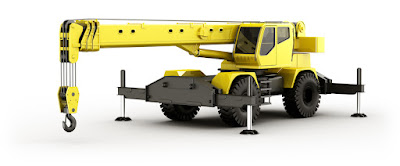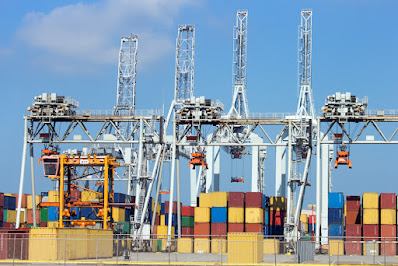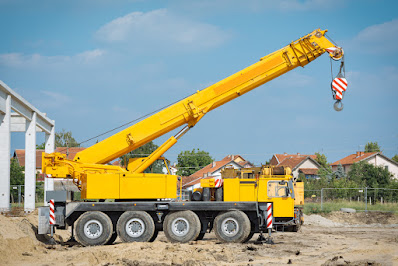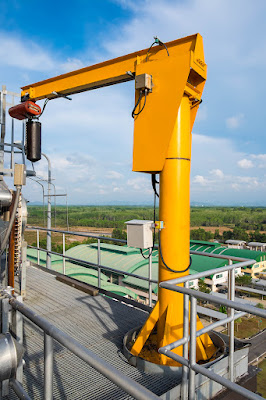Mobile Cranes On Mud Dirt and Concrete Surfaces
Different Types of Cranes
- Carry Deck Cranes
- Crawler Cranes
- Floating Cranes
- Rough Terrain Crane
- Truck-mounted Cranes
- Bulk-handling Cranes
- Stacker Cranes
- Telescopic Boom Cranes
- Hammerhead Tower Cranes
- Luffing Tower Crane
- Self-erecting Tower Cranes
- Gantry Cranes
- Jib Cranes
- Remote Cranes
Carry Deck Cranes
What are carry deck cranes?
Carry deck cranes are compact transportable four-wheeled cranes with a 360-degree rotating boom located in the center of the crane. Aside from the rotating boom, these cranes also have a cab for the operator beneath the boom.
Crawler Cranes
What are crawler cranes?
Crawler cranes are used in construction when a heavy weight needs to be raised across long distances or at unusual heights. They are constantly used for construction in difficult terrain, on new project sites, or in inclement weather. A crawler crane can drive onto dirt, mud, and dry land, as well as lift heavy loads.
Floating Cranes
What are floating cranes?
Floating cranes travel above the surface of the water. Pumping water into tanks called ballast tanks stabilizes floating cranes under changing water conditions. Water tanks allow the crane to safely and effectively lift entities across the water by acting as a counterbalance and lowering the crane's center of gravity.
Rough Terrain Cranes
What are rough terrain cranes?
Rough terrain cranes have an undercarriage with four rubber tires suitable for pick-and-carry operations as well as off-road and "rough terrain" applications. Outriggers are used to level and stabilize the crane before hoisting. Rough terrain cranes have four wheels and four wheels with four-wheel drive. Capable of traveling into small spaces and operating on rubble on uneven ground.
Truck Mounted Cranes
What are truck-mounted cranes?
For the usage of transferable load handling, truck-mounted cranes are used. In serious problems, this entails transporting heavy loads, which can exert significant forces on various elements of the crane. A truck-mounted crane can perform a variety of tasks. For delivery, truck-mounted cranes are dependable and mobile.
Bulk-handling Cranes
What are bulk-handling cranes?
Bulk-handling cranes differ from standard cranes. Instead of a simple hook that can handle a variety of slung loads, it features an important grasp for lifting large cargoes like coal, mineral ore, and so on. A shell grab or shell bucket is a two-piece hinged bucket grab.
Stacker Cranes
What are stacker cranes?
Telescopic Boom Cranes
What are telescopic boom cranes?
Tower Cranes
There are three different types of tower cranes:
Hammerhead Tower Cranes
What are hammerhead tower cranes?
Hammerhead tower cranes are one of the most common kinds of cranes used all over the world. They are extremely dependable for the precise, appropriate handling of a diverse range of heavy items.
The jib on a hammerhead tower crane rotates 360 degrees horizontally around the mast at a specific level, resembling an upside-down L. Racking is a unique feature of this type of tower crane in which the trolley drives the load horizontally along the jib without changing its level.
Luffing Tower Cranes
What are luffing tower cranes?
Luffing tower cranes and luffing-jib cranes are synonyms. It has the same structure as a hammerhead tower crane, except that the jib is latticed and may be lowered and declined, an action known as luffing. These cranes can lift greater weights than hammerhead cranes due to increased jib mobility.
Self-erecting Tower Cranes
What is a self-erecting tower crane?
Self-erecting tower cranes have a horizontal jib and a mast-mounted ballast, as well as the capacity to fold and unfold for building site dismantling and erection. Self-erecting tower cranes, as opposed to hammerhead cranes or luffing tower cranes,:
- Have a lighter structure
- Are Portable
- Hold a considerably lower max load capacity
Self-erecting tower cranes are most useful in cases where:
- Construction mandates a close fit between structures
- Extremely weighty lifts are not needed
- There is recurring erection, disassembling, and transport of equipment
Fixed Cranes
Bridge/Overhead Cranes
What are bridge/overhead cranes?
Bridge/overhead cranes are lifting devices used to transport weights backward, forward, and from side to side. It operates on a bridge/overhead location in a specific area of the facility. Thus, a crane can be operated in either an open or closed environment. An end truck connects a horizontal girder to a bridge/overhead moving crane.
6 Types Of Overhead Cranes
Gantry Cranes
What is a gantry crane?
Jib Cranes
What are jib cranes?
Remote Cranes
What are remote cranes?
Remote cranes remove personnel and operators from the crane's cab, preventing a potentially hazardous and stressful working environment. Preventing all accidents and remaining safe when functioning remotely from the control room is ideal. The crane can now run faster, and ramp and cycle times have been reduced.
In the construction industry, where crane cab operators are now obsolete. Heavy machinery and cranes have evolved. Remote cranes became available as heavy equipment technology advanced. Rather than sitting inside the cab and operating the crane, the crane operator can now directly observe the load on the manufacturing floor by employing a remote crane.
Remote cranes are offered as a safer alternative. Avoiding falls that could occur with cabs located in high places. Furthermore, the remote crane operator can avoid standing under the load, where there is a risk of falling loads and causing injury. The operator and spotter are considerably more useful because they can work side by side on the ground.
Can remote operators operate cranes with no Signalperson around? In some cases, there's no reason for a spotter or signalperson if the remote crane operator can complete the project unaided.
Mobile Cranes and Ground Conditions
Given the size and weight of the majority of cranes, it's critical to monitor ground conditions at the project's construction site. The company in charge of the crane is responsible for ensuring that the requirements for crane assembly are met.
The ground conditions must be strong, well-drained, and graded in order to support mobile cranes on various types of land. Furthermore, the company must notify the crane operator of any known ground conditions risks, such as utilities, and provide them with any additional ground conditions knowledge gained.
Evaluating Ground Conditions
Although the controlling entity is responsible for evaluating ground conditions, the company operating the crane is frequently better able to evaluate and determine whether the ground conditions are adequate.
Mobile Crane School
All Purpose Crane Training is a mobile crane school that offers crane training and crane certification on all OSHA-compliant mobile cranes. We also provide instruction in overhead cranes, forklifts, and aerial lifts. All Purpose Crane Training will help you learn more or become a certified crane operator.
Call us at (888) 501-1355 or fill out our contact form if you have any queries about rates or courses.

















Comments
Post a Comment